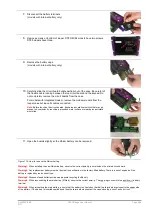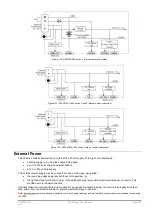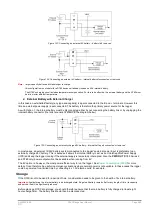
UM-0085-B09
DT80 Range User Manual
Page 277
RG
As with the
TEST
command, lines in the status report can be returned individually, using
STATUS
n
.
Command
Description
STATUS1
returns model name and firmware version (same as
TEST0
)
STATUS2
lists active schedules, and halted schedules
STATUS3
returns the number of alarms in active schedules, and the number in halted schedules
STATUS4
returns the number of polynomial/spans defined, and displays the definition of each
STATUS5
lists schedules with logging enabled, and schedules with logging disabled
STATUS6
returns total free space (kbytes) on internal file system, and total used space
STATUS7
returns total free space (kbytes) on inserted USB memory device, and total used space
STATUS9
returns current settings for all switches
STATUS10
returns internal details about the current job
STATUS14
an extended version of
STATUS10
The
STATUS14
command is somewhat special in that it can also be applied to a non-current job, i.e.:
STATUS14 "
jobname
"
CHARAC Command
During manufacture, each
DT80
is
characterised
– that is, various operational parameters are measured and then
programmed into the unit's flash memory. This process is designed to cancel out any variations between units due to
component tolerances and such like.
The
CHARAC
command lists the various characterisation parameters. These will vary slightly from unit to unit.
If any of these parameters have not been set correctly then a warning message such as
DT80 not characterised
will be displayed on the LCD. Contact dataTaker technical support if you see this message.
SERVICEDATA Command
The
SERVICEDATA
command automatically issues a number of diagnostic commands which together provide a
comprehensive "snapshot" of the current state of the
DT80
. If you contact dataTaker support to resolve a problem with
the logger you may be asked to run this command and then send the results to dataTaker for analysis.
By default, this command will output its results to the current comms connection. Alternatively, it may be directed to a text
file using:
SERVICEDATA "
filename
"
. This file may then be retrieved from the logger using FTP or by using the
COPY
command to copy it to a USB memory device.
This command can also be issued via the
DT80
web interface (Series 2 only).
A
SERVICEDATA
report includes:
•
TEST
command output
•
CHARAC
command output
•
STATUS
command output
•
current parameter settings
•
current profile settings
•
event log
•
error log
•
current job program listing
•
DIRJOB*
command output (storefile status for all jobs)
•
DIRTREE
command output
•
internal file system integrity check
•
comms settings and statistics
•
firmware thread status
•
memory status
•
TCP/IP communications status
















































